Propolis, then Dutch Rush, varnish ground technique...
(Modified 10/20202 )
Page G_08/10
..This Page is left for interest showing past history of varnish ground research.
..Please see bottom paragraph on page for current process.... (10 / 2020)

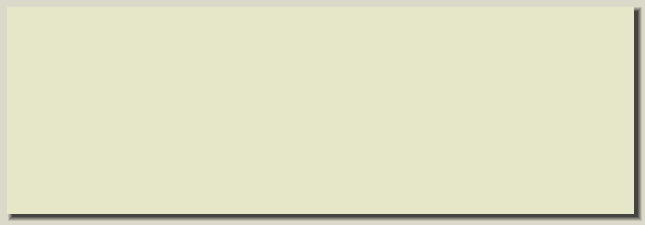

...Varnish ground formulations have been a topic of great interest among violin makers for hundreds of years. The successful formulations of the past were closely guarded secrets and not preserved as public information.
...The varnish ground is that layer of material put on the woods' outside surface before it is varnished.
..I should mention here that if you want to apply a permanent stain to the bare wood surface, the time to do it is before the ground layer is applied. If applied after the ground layer (as in my Opus # 26 and # 27 violins) you may get somewhat hard to control or predict (although very vivid and interesting) coloration results.
..One function of the varnish ground layer is to seal the wood end grain (which is similar to a plastic soda straws, hollow in the center, and liable to wick in liquid varnish, adding weight to the top plate hurting performance).
...Another hoped for function of the ground layer is to enhance the vibration of the plates in some way, adding to the tone of the violin.
...I have experimented with varnish grounds at times over the past 14 years, read up on the subject; and offer this current formulation as the best results-based varnish ground so far. It is all natural and although the application is straight forward, the resulting chemical ground on the wood surface may be quite complicated. The results are audible, as you will hear in this video demonastation of a violin plate which is treated with different combinations of these two components, so you can perhaps hear the results: The five combinations in the test are:
- control: nothing was done to surface.
- Just two coats of propolis applied.
- Just two applications of dutch rush applied.
- First two coats of propolis applied, and then two applications of dutch rush applied on top.
- First two applications of dutch rush applied, and then two coats of propolis applied over that.
..As you will see in the demonstration, I have marked out all five combinations in each of the three bout areas of the plate; upper bout, center bout, and lower bout. The resulting tonal changes go straight through the wood violin plate and sound the same whether tapped on the inside or outside of the plate.
..This full sized violin plate is made of exceptionally fine grained old growth redwood. (Made by a vioin maker in Woodburn, Oregon and purchesed so that I could do this demonstration.):



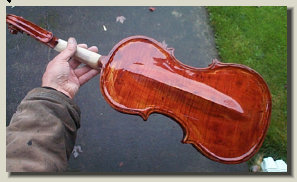
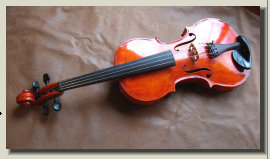
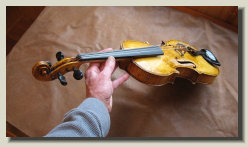
..I have used some of these combinations of ground on various of my violins.
...The Opus # 24 violin was made with two applications of Dutch Rush on both inside and outside.
...The Opus # 26 violin was made with two applications of Propolis on both the inside and outside.
...The Opus # 27 violin was made with two applications of propolis first and then two applications of Dutch Rush on top of that; both inside and outside the violin body... before the outside was varnished with 7 coats of German oil varnish.
..I recorded a series of taps on this test plate and then analyzed the sound levels made on the various grounds. As I recall, the dutch rush on top of the porpolis produced both the best quality of sound, but as well it was 40% louder! Indeed, the Opus #27 violiin has a special sound, perhaps partly due to this ground formula combination. This test data was used by me to select the ground for the Opus # 27 violin.
..My personal conclusion is that this combination of two coats of propolis, followed by two applicaitons of dutch rush on top; both inside and outside the violin body, is the best sound and volume improvement of any of the ground formulations I have experimented with so far. It produces and 'elegant' sound quality (based on blind sound tests), that is very appealing.
(c) 2013 David Langsather


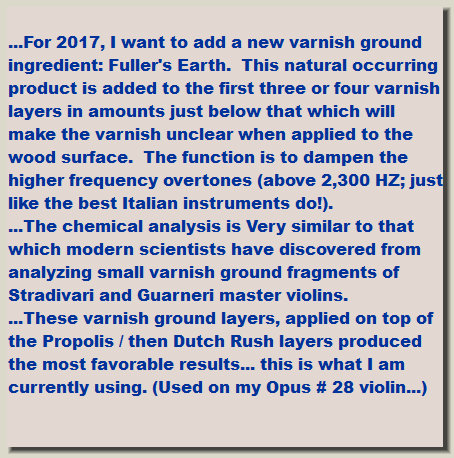
>>>> Since this work, I have spend two years on "Violin Timber" (pleasing tone of the instrument) research. Specifically attempting to identify those factors that make for more pleasing violin sound.
...As the result: I find that to approach the "Cremona sound" , the upper overtones produced should be reduced, especially above a certain frequency {which itself is dependent on the frequency of the note being played.}.
...The following items do this, adding to each others effect:
First step in varnish ground:
>>>Burnish the wood surface with a Hematite Burnisher, twice.
>>>Dutch Rush the wood surface along the grain direction, twice.
>>>Apply varnish with Fuller's Earth added and carefully stirred in. {5 grams mixed with enough varnish to cover the violin for two coats. These go on thickly and dry quickly as well.}
>>>Apply the final two coats of varnish.
It works!
(c) 2020 David Langsather














